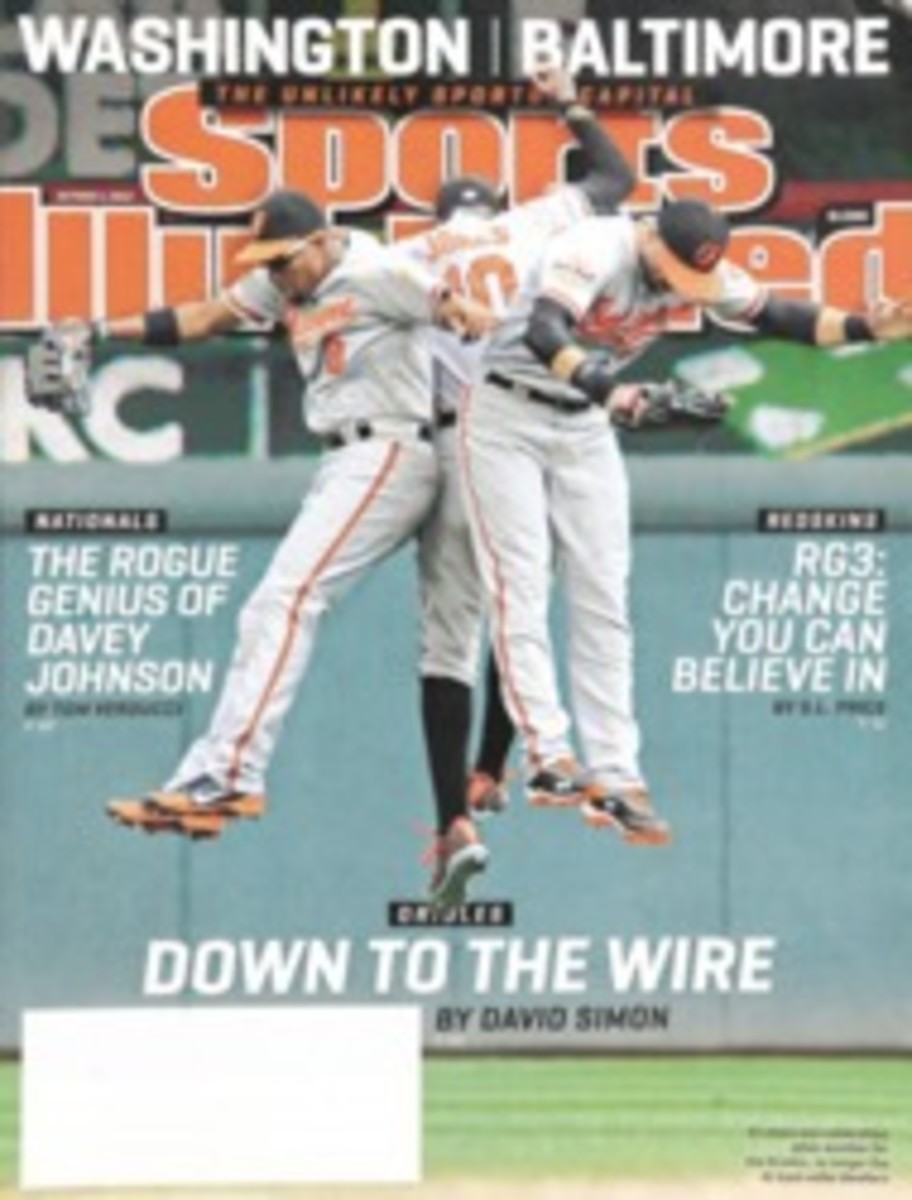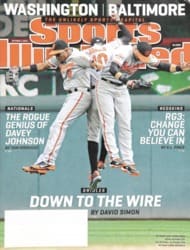
The Big Matter of Small Markets
NEW YORK OWNER JAMES DOLAN
FLORIDA OWNER CLIFF VINER
I don't mean to sound ungracious. But this drove me nuts during my tenure from July 2008 to Dec. '11 as an owner and then CEO of the Panthers: the fact that I was often expected to entertain guests during the games. I like socializing, I really do, but there's a time and a place, right?
Despite my deep involvement in the business of hockey, I'm really just a true fan of the sport. That's why it's so depressing to see another NHL work stoppage. Unfortunately for us fans, no league has locked its players out as often as this one over the last two decades—1,698 regular-season games lost, more than major league baseball, the NBA and the NFL combined. There's plenty of blame to go around between the players and the owners, and between commissioner Gary Bettman and players' association executive director Donald Fehr. If you look at the time line over the past year, Fehr appeared to be stalling and stringing out negotiations—almost as if it were his intent to get the players locked out, which would enhance their position in the p.r. war.
I know it's tough to muster sympathy for multimillionaires, but when most of these owners say they're losing money every year, they're telling the truth. Forbes recently reported that 18 of the 30 teams failed to turn a profit during the 2010--11 season. That might seem far-fetched given that the NHL has touted its revenue growth since the last lockout, from $2.2 billion in '03--04, the season before the work stoppage, to $3.3 billion last year. The game is seemingly more profitable than ever.
But under the last collective bargaining agreement the piece of the pie served up to the players reached a whopping 57%. That meant, on average, 57% of a team's revenues paid the salaries of 23 players. That left 43% to cover almost everything else: the highly paid team president, general manager and coach; assistant coaches and scouts; a whole minor league system; and hundreds more employees, as well as office supplies, the arena lease and the cost of freezing the ice.
And that 57% figure was calculated at the midpoint of the salary cap. The first year out of the lockout, the cap was $39 million and the floor $21.5 million. This year the cap would have been $70.2 million; the floor, $54.2 million. While the cap increase has been 80%, the floor has jumped an astonishing 152%! Trust me, there's no way revenues have kept pace, especially for the small-market teams that are paying way more than 57% of their revenues to the players.
That's why the owners are determined to take a significant whack at that 57%. (Their last offer, before locking the players out, was 49%, dropping to 47% over six years.) There's a chance they could get more sympathy from the general public and the fans—who seem to be on the side of the players this time around—if they could restrain themselves a bit. Circumventing the intent of the cap by signing free agents to long, front-loaded contracts that reduce the hit to the club's total cap (in July, for instance, the Wild signed a pair of free agents, winger Zach Parise and defenseman Ryan Suter, to identical 13-year, $98 million contracts) does them no favors in the p.r. battle when they claim that their cash flow is suffering.
Still, make no mistake: The players do need to take a pay cut. But the pain should be shared. This is a players-versus-owners issue, of course. But it's just as much a battle between the high-revenue clubs (the Rangers, Maple Leafs and Canadiens, to name a few) and the teams that are losing money. The players have indeed already offered to move down from 57%. But what they're asking in return is, Why can't the richer clubs give back as well? It sounds like the NHLPA may propose a soft cap with luxury taxes for teams that outspend it.
In my brief stint as an owner I looked forward to meetings of the league's Board of Governors, on which I represented the Panthers. With teams arranged alphabetically in a U-shape facing Bettman's table, I always sat between the Oilers and the Kings. This was a collection of successful, independent, strong-willed men. I remain in awe of Bettman's ability to control the agenda at those meetings, given the résumés of some of the attendees.
In the end, though, both sides will have to make concessions. The quick fix—a 50-50 revenue split—sounds fair and equitable, but it doesn't address the underlying problem: that most of the money-losing, small-market teams are forking over a much higher percentage of their remaining revenue on the business costs catalogued above.
This is Siegel's Long-Term Solution: Get a team of independent financial and accounting geniuses to figure out the math to equitably divide up the $3.3 billion in revenue, and then convert that into a new CBA. The players take a little less, the owners of the wealthy clubs take a little less and the owners of the cash-strapped teams get enough in subsidies to eke out a profit.
And then let's drop the puck. Soon.
Siegel, 49, who played club hockey at Penn, is the former CEO and co-managing partner of the Florida Panthers. A serial entrepreneur, he recently acquired ISShockey.com, of which he is the CEO.
SIGN OF THE APOCALYPSE
The Bakersfield (Calif.) Condors minor league hockey team originally billed its Dec. 27 game against the Stockton Thunder as Our City Isn't Bankrupt Night—a reference to Stockton's filing for Chapter 9 protection in June—then, after complaints of insensitivity, changed the name to Boomtown Bakersfield Night.
ILLUSTRATION
ILLUSTRATION BY JOHN UELAND
PHOTO

